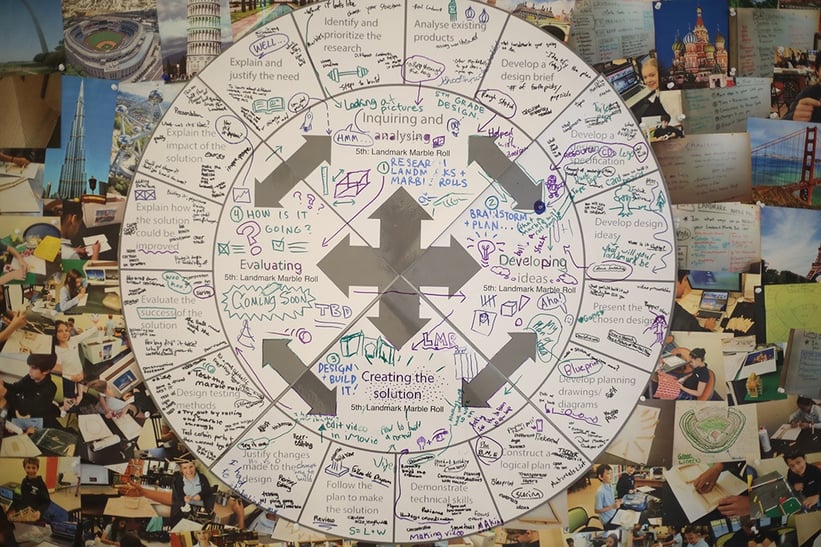When International Baccalaureate students enter into the Middle Years Program (MYP), design becomes a necessary part of the curriculum. Why? Design thinking keeps the function of any project constantly in mind while considering real world applications. If function is forgotten, the result will be a subpar design. Though there are many tangible results of Design, design thinking can be used to solve problems within any aspect of life. By doing the same action of relating function to actual applications — whether that's to become a better reader, improve in math or anything else.
And within design thinking lies the design cycle. No matter the scope, size or complexity of a design project, the MYP Design Cycle can always be applied. In the simplest terms possible, the Design Cycle is a way to make sure you don't let anything slip through the cracks by the time you finish your design...it particularly helps middle schoolers who may get ahead of themselves!
What is the MYP Design Cycle, Anyway?
The Design Cycle is comprised of four steps: Inquiring and Analyzing, Developing Ideas, Creating a Solution and Evaluating. The four steps do not necessarily have to be completed in order, and it's actually encouraged to backtrack and jump around when needed.

Inquiring and Analyzing
During the first stage, designers must explain and justify the need for their project. Generally, this is also when designers research, explore existing products, produce an initial sketch and create a design brief, which identifies what materials are needed and what will actually be designed.
Developing Ideas
Next, concepts become more sophisticated. This is the stage when students make design specifications, determine how many materials are required, estimate the time needed and go over details such as color and scale. Additionally, this is when the rudimentary sketch from the previous stage becomes a blueprint with precise measurements.
Creating the Solution
Here, technical skills are used to physically follow the plan to make the solution. At this point, designers should feel prepared to take their ideas off paper and create them with physical materials. However, during this stage, designers shouldn't feel handcuffed by their design and should be open to thinking on the spot. Initial testing occurs during this stage and if obstacles are encountered, changes can be made to optimize and improve the original plan.
Evaluating
This is when different testing methods are developed, the success of the solution is judged and any improvements to make the solution are identified. From here, the different stages can be repeated to further develop or advance the solution.
The Cycle in Action
In the following weeks, I'll go through the MYP Design Cycle in relation to a real in-class project:
Last year, I assigned my students to complete the Landmark Marble Roll. Their mission — if they chose to accept it (spoiler alert: they had to accept it) — was to choose a landmark like the Statue of Liberty and Eiffel Tower, construct it out of toothpicks and popsicle sticks, and figure out a way to have a marble roll from the top to the bottom... WITHOUT falling off the track! Did they succeed? Check out my next blog post to find out!



